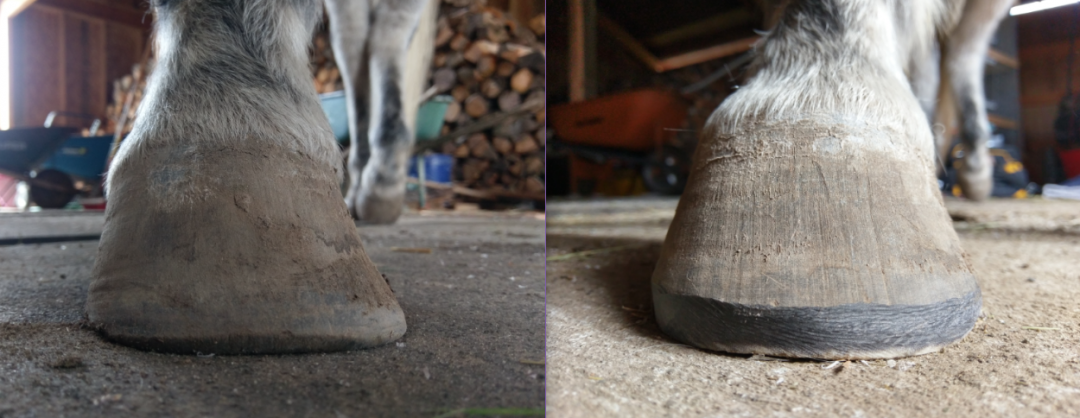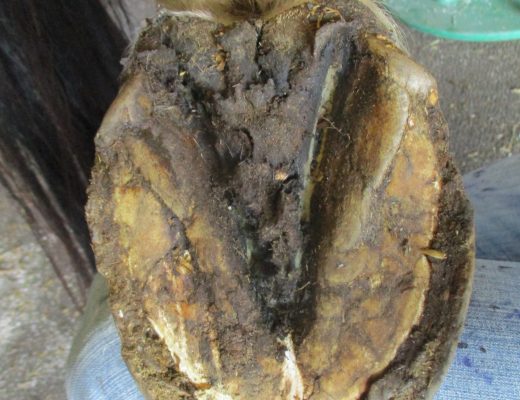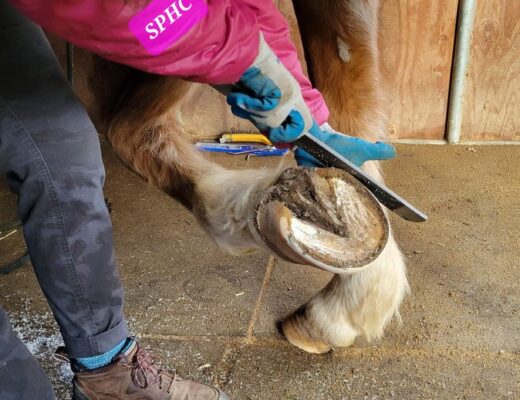Pictured is a horse who was flaring to the inside on all four feet. I was able to make some progress with a 6 week cycle, but with just the first 4 week cycle I was able to make a much bigger difference.
Something I hear many people in the horse industry say is that hooves grow faster in the summer and slower in the winter. It’s common to have your horse on a shorter trim/shoeing schedule in the summer than in the winter. You may ride or show less in the winter than the summer, so it’s the “off season.” Because this is something that “everyone knows,” it becomes “normal” for horse owners to think a shorter trim cycle in the winter is unnecessary. And I see many hoofcare providers allowing for seasonal trim cycles, which all compounds into an issue when a horse needs a shorter trim cycle. It’s also very common for a new client to switch over to me and be placed on a shorter time cycle for a time.
If you don’t feel like you can afford a shorter trim cycle, that is something to mention to your hoofcare provider. If you disagree with your hoofcare provider about a shorter trim cycle, you may want to seek out a second opinion. But don’t let fear of the financial cost keep you from what your horse may need seasonally. You could learn to do touch up trims in between appointments.
That is not to say that I don’t allow for longer trim cycles, but only once I feel like I have gotten any distortions under control AND I believe the horse can maintain good hoof health on a longer cycle. We look at feet all day long. We can tell when things are going well and progressing, and when things needs a nudge in the right direction.
Once I get a horse to a true “maintenance” stage, which means we have helped heal imbalances, thrush, and corrected the flare to the best foot that horse can grow, then and onlythen may we consider tweaking the trim cycle. It all depends on where your horse started. And it depends on where you want your horse to stay.
Your horse works on their four feet every day of every season, whether it is show season or not. If you’re dealing with hoof related issues and your hoofcare provider suggests a shorter trim cycle, listen to them. It may be a temporary change or it may be permanent, but your horse’s feet will show you what’s working. Horses feet do not need to be constantly micromanaged, but they do need an appropriate trim cycle. Seasonal trim cycles may or may not work for your horse, but they should not be considered the industry standard. Some horses I trim stay on a 4 week cycle all year round. Some horses start on a 4 – 5 week cycle with me and end up on a 6 week cycle. Some horses do have a shorter cycle when they are growing faster. Each horse has a unique history, environment, and work load. Likewise, each individual horse’s feet has unique needs for optimum health. The old adage “no hoof, no horse” still rings true.





No Comments